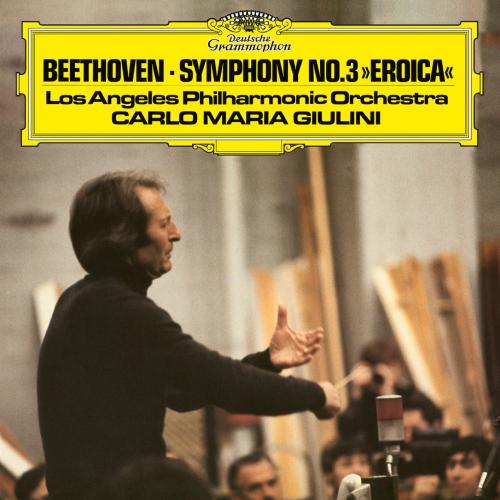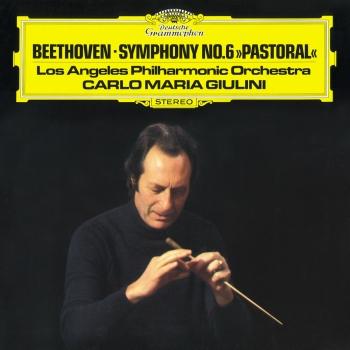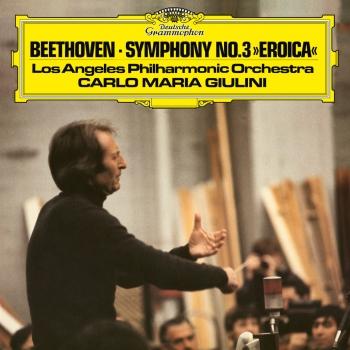
Beethoven: Symphony No. 3 in E Flat, Op. 55 (Remastered) Los Angeles Philharmonic Orchestra & Carlo Maria Giulini
Album info
Album-Release:
2019
HRA-Release:
22.03.2019
Label: Deutsche Grammophon
Genre: Classical
Subgenre: Orchestral
Artist: Los Angeles Philharmonic Orchestra & Carlo Maria Giulini
Composer: Ludwig van Beethoven (1770–1827), Robert Schumann (1810-1856)
Album including Album cover
I`m sorry!
Dear HIGHRESAUDIO Visitor,
due to territorial constraints and also different releases dates in each country you currently can`t purchase this album. We are updating our release dates twice a week. So, please feel free to check from time-to-time, if the album is available for your country.
We suggest, that you bookmark the album and use our Short List function.
Thank you for your understanding and patience.
Yours sincerely, HIGHRESAUDIO
- Ludwig van Beethoven (1770 - 1827):
- 1 1. Allegro con brio 20:33
- 2 2. Marcia funebre. Adagio assai 17:23
- 3 3. Scherzo. Allegro vivace 06:33
- 4 4. Finale. Allegro molto 13:03
Info for Beethoven: Symphony No. 3 in E Flat, Op. 55 (Remastered)
Carlo Maria Giulini (1914-2005) was music director of the Los Angeles Philharmonic from 1978-1984, beginning upon the departure of Zubin Mehta (mus. dir. 1962-1978) to be the New York Philharmonic's music director. This recording of the Beethoven "Eroica" Symphony was Giulini's very first Los Angeles Philharmonic recording (November, 1978) and was released shortly after on LP.
The Beethoven Third is too famous to be introduced. The Eroica was a revolution in the world of Symphony comparable to the Rite of Spring in contemporary music. Beethoven puts it all in a new language, nevertheless keeping the structure of the classical Symphony with four movements.
Many readings are famous. However, it is difficult to find the definitive Eroica. Klemperer and Monteux offered two remarkable readings in mono version. In the forthcoming days Dudamel will give his own. Giulini, with the same LA Philarmonic now conducted by Dudamel gave an impressive reading.
His main innovation was the tempo in the first movement. Though it keeps the Allegro con Brio approach, it does not go that fast like other versions. An this perspective gains value with musicology and research about the Symphony. The Chailly recently issued version shows that Giulini reading has strenght and support instead of a maniac first movement. Here in the first movement Giulini gathers the many ideas Beethoven tried to condense in this long movement. As a matter of fact, the Eroica lasted more than any symphony ever written before.
Appart from that peculiar reading of the first movement, the symphony keeps its strenght, correct playing and expression all the time. The second movement perhaps has less pathos than in other readings. However, the Giulini reading gives a solid account and, through the elegant style and serenity of the battoom, you may seem to see and feel all the whole view and perspective of the Eroica. The epic and tension are there, together with the themes of faith, struggle, victory, redention and some kind of supernatural joy.
Los Angeles Philharmonic Orchestra
Carlo Maria Giulini, conductor
Digitally remastered
No biography found.
This album contains no booklet.










